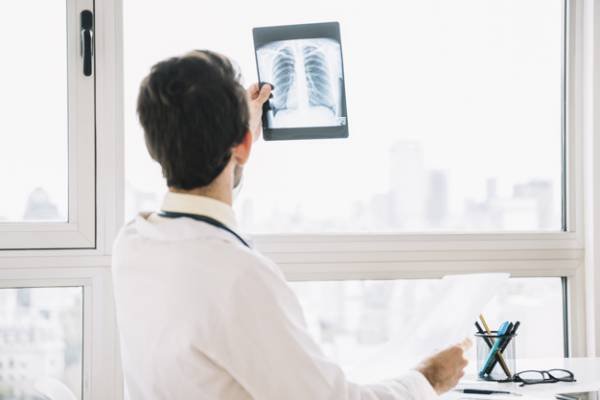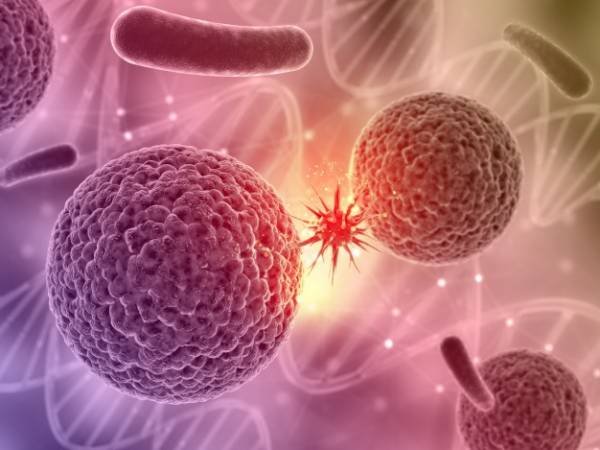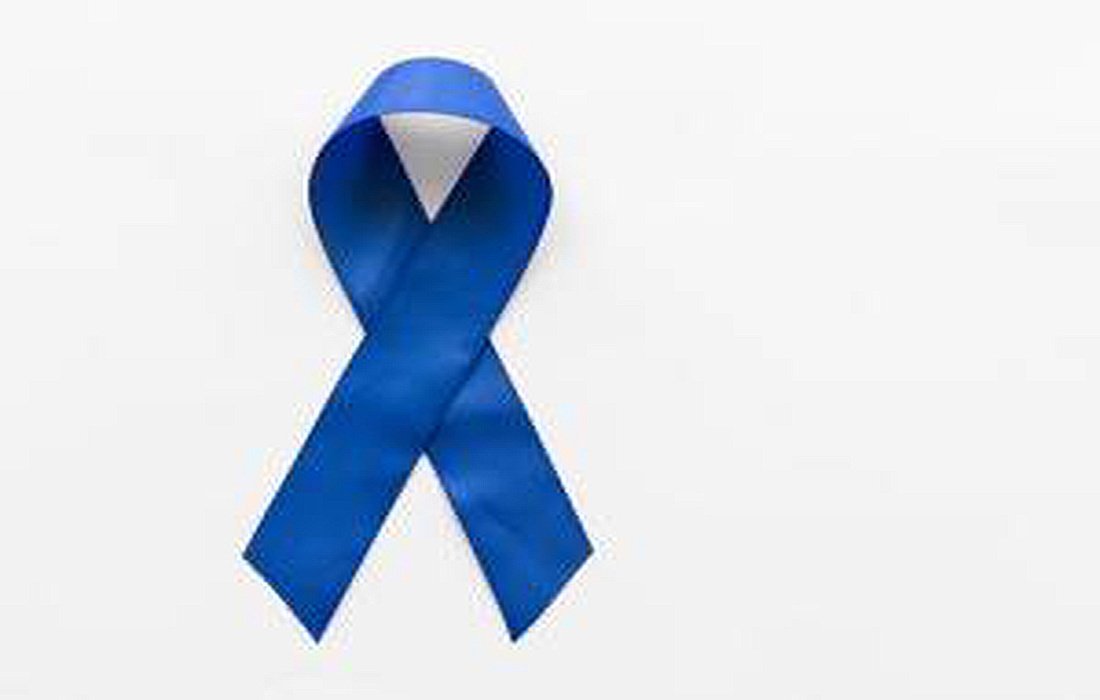Cancers that are more common in men and the 10 types of cancer that lead to men’s deaths.
In 2015, it was estimated that out of every 312 people, 150 men lost their lives due to cancer. The cancer death ratein menis higher than in women. According to statistics from the years 2009 and 2013, the cancer death rate was 207 per 100,000 men and 145 per 100,000 women; overall, 39.6% of men and women will develop cancer in their lifetime.
Fortunately, their survival rates have generally increased, and even solutions are being offered for some cancer problems and treatments.
For about 15 years, the cancer death rate among men has decreased by approximately 1.8%, although there has been an increase for some specific types of cancer.
The best treatment and highest survival rates come from prevention and early diagnosis of cancer. For example, exposure to radon gas in the home is the main cause oflung cancerin non-smokers, which is completely preventable.

Which cancer is more common in men than women?
Next in the health sectionSelMagzlet’s discuss common cancers in men:
1. Lung Cancer is Common Among Men:
Lung cancer is one of the leading causes of cancer death in men.Symptoms of lung cancer in men may includepersistent coughcoughing up blood, and breathing difficulties.Currently, there is a screening test for lung cancer that can reduce lung cancer death rates by up to 20%.
This test is recommended for individuals aged 55 to 80 with a smoking history of at least 30 years. Risk factors for lung cancer include smoking, but there are other risk factors as well.
For instance, it is predicted that in the coming years, 21,000 people will die from lung cancer due to radon gas exposure.
2.

Prostate Cancerin men:Prostate cancer is the second leading cause of death among men, with 27,530 individuals dying from this cancer in 2015.
In most men diagnosed with prostate cancer, symptoms may include an increased need to urinate and frequent urinationat night, as well as the presence of blood in urine or sperm, or bone pain.A family history of prostate cancer also increases the risk of developing it. Overall, early diagnosis of this disease can save lives and is possible through PSA testing and regular check-ups.
3.Colon Cancerin men:
This cancer is the third leading cause of cancer death among men. Unlike other cancers, screening for colon cancer can significantly save lives. Its screening, unlike some other tests, has two main goals.

This may provide an opportunity for early prevention of colon cancer and early detection in the initial stages of treatment can increase survival rates and quality of life. To understand better, it is important to know that many colon cancers arise from polyps.While cancer growth in hyperplastic polyps is unlikely, adenomatous polyps can advance from a precancerous stage to a cancerous tumor, and this process may take more than 10 to 20 years.By removing a polyp that has led to cancer, it is possible to stop cancer. Tests such as colonoscopy can also identify early cancers in the colon, which can be removed before they grow and multiply.
Most people are advised to start screening for colon cancer after age 50, but if there is a family history of such diseases, screening should begin at a younger age.
Some early symptoms of colon cancer include:
changes in bowel habits, any change such as
blood in stool
(red or black)
thin and pencil-like stool
- discomfort in the lower abdomenLike lung cancer, new treatments for advanced colon cancer differ for individuals with varying life situations.4. Pancreatic Cancer in Men:
- Pancreatic cancer is the fourth deadliest cancer in men. Risk factors include smoking, ethnicity, chronic pancreatitis, and
- diabetes.
There is no general screening test available. It may only be performed for those with a hereditary disposition for this disease. A surprising factor recently discovered is the connection between gum disease and pancreatic cancer.

Pancreatic cancer is often referred to as a “silent” disease because symptoms usually do not appear in the early stages. However, as the cancer grows and spreads, pain often develops in the upper abdomen and sometimes radiates to the back.
Pain may worsen after eating or when lying down. Other symptoms may include jaundice,nausea,loss of appetite,
weight loss,fatigue, and weakness.5.
Liver Cancer
and intrahepatic bile duct cancer in men:If cancer spreads to the liver from other parts of the body, it is called liver metastasis; if cancer originates in the liver itself, it is referred to as primary liver cancer.Many common cancers in men, such as lung cancer, pancreatic cancer, and colon cancer, may spread to the liver.Risk factors for liver cancer include excessive alcohol consumption, chronic hepatitis B infection,hepatitis

C, and exposure to aflatoxin (which may be found more inpeanutsand
corn).
Symptoms of liver cancer are similar to those of pancreatic cancer and may include
yellowing of the skinor yellowing of the eyes, loss of appetite, and abdominal pain.Currently, there is no general screening test to detect liver cancer, but it may be advisable for some individuals at higher risk, such as those with chronic hepatitis B infection or cirrhosis.6.Blood Canceror leukemia in men:Leukemia is not just one disease, but includes acute myeloid leukemia, chronic lymphocytic leukemia, and other types of leukemia. As a blood-related cancer, symptoms are often not confined to one area of the body.
Furthermore, leukemia symptoms often overlap with many conditions and may include fatigue,weakness,bruising, joint and bone pain, and frequent infections.
The causes of leukemia vary based on its type. However, they can broadly range from environmental effects to genetic diseases like Down syndrome.

In recent years, several types of leukemia have significantly improved with treatment. A type of leukemia that is common in children and rapidly leads to their deaths has extended their lives by about 80%.7.Esophageal Cancer
in men:
Esophageal cancer is the seventh deadliest cancer among men. There are two primary types of esophageal cancer: adenocarcinoma and squamous cell carcinoma, which differ in the types of cells that cause cancer.While squamous cell carcinoma was more common in the past, adenocarcinoma is currently the most common form of this disease.Symptoms of esophageal cancer may include difficulty swallowing, painful swallowing, a sensation of something stuck in the throat, or symptoms such as choking, sudden weight loss, or persistent coughing. Because the symptoms of this disease are shared with many other conditions, esophageal cancer is often diagnosed in later stages.
Risk factors vary depending on the type of esophageal cancer. There is no general screening test for esophageal cancer; however, several forms of screening exist for individuals at higher risk.
Such as those with a hereditary predisposition to gastroesophageal reflux disease. Men and women with gastroesophageal reflux disease may display warning signs such as difficult swallowing, bleeding,

anemia,sudden weight loss, and frequent vomiting.These symptoms may persist even after 4 to 8 weeks of treatment.
Men over 50 with this disease for at least 5 years may experience complications such as obesity, signs of nighttime reflux, tobacco use, and abdominal swelling.
The survival rate of individuals with esophageal cancer is greater than 5 years, which has recently increased by 18%, and varies significantly depending on the stage of diagnosis.
Their survival rate is 40% higher with early diagnosis.

8.
Bladder Cancerin men:Bladder cancer is the eighth leading cause of cancer death in men. As discussed in the health section of SelMagz, there are various types of bladder cancer, the most common of which begins with carcinoma.
About 50% of men with bladder cancer are diagnosed at early stages, when they are non-invasive and only involve the inner layer of the bladder cells.
In the remaining 35% of men, it is diagnosed when the disease has progressed deeper into the bladder tissues, and only 15% of them realize they have cancer when it has spread to all body’s organs.
Therefore, it is essential to be aware of the early symptoms of this cancer, which include: blood in urine, painful urination, or frequent urination.
There are several risk factors for bladder cancer, including exposure to chemicals, especially in the dye industry, smoking, the use of certain medications and herbal supplements, and a family history related to this disease.

9. Non-Hodgkin Lymphoma in Men:This cancer starts in lymphocytes (a type of white blood cell and is regarded as the ninth deadliest cancer in men).There are over 30 types of this cancer, which are divided into two main categories based on the type of lymphocyte affected (B cells or T cells).
The behavior and growth patterns of these tumors vary widely. Some lymphomas grow very slowly, while others are highly aggressive.
Symptoms also vary based on which lymph nodes are affected. However, the most common symptoms include:
shortness of breath
and pressure in the chest (with lymphoma in the chest)
feeling completely full after a small meal (with lymphoma in the abdomen) or visibly large lymph nodes in the neck. Some very common non-specific symptoms include night sweats, extreme fatigue, and sudden unexplained weight loss.

However, overall, the survival rate beyond 5 years is approximately 69%.
10. Kidney Cancer in Men:
Kidney cancer grows in the kidney cells and bilateral structures located in the back of the body and abdomen. The most common type of kidney cancer, which constitutes about 90% of these cancers, is renal cell carcinoma.
Other types include:
transitional cell carcinoma, Wilms tumor, and renal sarcoma.Symptoms and signs may include:blood in urine, pain, or a mass in one side of the abdomen, or non-specific signs such as excessive fatigue, fever, or sudden weight loss.
Smoking and obesity are both linked to kidney cancer. However, genetics also play a significant role.
The Von Hippel-Lindau genetic disorder, a family history of kidney cancer in a sibling, having a history of

high blood pressure
or use of specific medications for it, exposure to certain chemicals increases the risk of kidney cancer.
Male Cancer
Most Common Cancer in Men
Lung Cancer
Incurable Cancer
Prostate Cancer
Common Cancers in MenColon CancerMen’s Colon Cancer







